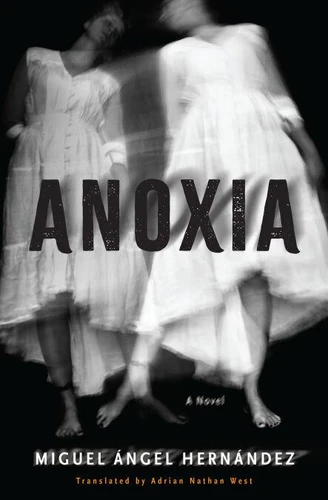Anoxia. A Novel
Par : ,Formats :
Disponible dans votre compte client Decitre ou Furet du Nord dès validation de votre commande. Le format ePub protégé est :
- Compatible avec une lecture sur My Vivlio (smartphone, tablette, ordinateur)
- Compatible avec une lecture sur liseuses Vivlio
- Pour les liseuses autres que Vivlio, vous devez utiliser le logiciel Adobe Digital Edition. Non compatible avec la lecture sur les liseuses Kindle, Remarkable et Sony
- Non compatible avec un achat hors France métropolitaine
 , qui est-ce ?
, qui est-ce ?Notre partenaire de plateforme de lecture numérique où vous retrouverez l'ensemble de vos ebooks gratuitement
Pour en savoir plus sur nos ebooks, consultez notre aide en ligne ici
- Nombre de pages304
- FormatePub
- ISBN978-1-63542-459-1
- EAN9781635424591
- Date de parution04/02/2025
- Protection num.Adobe DRM
- Taille1 Mo
- Infos supplémentairesepub
- ÉditeurOther Press
Résumé
In this mesmerizing psychological novel, a strange job leads a widowed photographer down a rabbit hole where the line between past and present, and the living and the dead blurs. What is our relationship with the dead? How do we remember them? What dark secrets do our images of them hold? How do we emerge from grief to face the time we have left?Ten years after the tragic death of her husband, Dolores Ayala, owner of an old photography studio that has run out of clients, receives the most unusual assignment of her career: to take a portrait of a deceased person on the day of his funeral.
Accepting it leads her to meet Clemente Artés, an eccentric old man obsessed with recovering the ancient tradition of photographing the dead. Under his guidance, Dolores will explore this forgotten practice, experience the slow time of the daguerreotype, and our need for images to remember those who are no longer there. She will also discover that some of them hold dark secrets that should never be revealed and, above all, that the dead never cease to move and sometimes pounce on the memory of the living.
Miguel Ángel Hernández has written a subtle, dazzling novel about the borders between life and death, about memory and guilt, about the past that stays with us and our constant search for air to breathe.
Accepting it leads her to meet Clemente Artés, an eccentric old man obsessed with recovering the ancient tradition of photographing the dead. Under his guidance, Dolores will explore this forgotten practice, experience the slow time of the daguerreotype, and our need for images to remember those who are no longer there. She will also discover that some of them hold dark secrets that should never be revealed and, above all, that the dead never cease to move and sometimes pounce on the memory of the living.
Miguel Ángel Hernández has written a subtle, dazzling novel about the borders between life and death, about memory and guilt, about the past that stays with us and our constant search for air to breathe.
In this mesmerizing psychological novel, a strange job leads a widowed photographer down a rabbit hole where the line between past and present, and the living and the dead blurs. What is our relationship with the dead? How do we remember them? What dark secrets do our images of them hold? How do we emerge from grief to face the time we have left?Ten years after the tragic death of her husband, Dolores Ayala, owner of an old photography studio that has run out of clients, receives the most unusual assignment of her career: to take a portrait of a deceased person on the day of his funeral.
Accepting it leads her to meet Clemente Artés, an eccentric old man obsessed with recovering the ancient tradition of photographing the dead. Under his guidance, Dolores will explore this forgotten practice, experience the slow time of the daguerreotype, and our need for images to remember those who are no longer there. She will also discover that some of them hold dark secrets that should never be revealed and, above all, that the dead never cease to move and sometimes pounce on the memory of the living.
Miguel Ángel Hernández has written a subtle, dazzling novel about the borders between life and death, about memory and guilt, about the past that stays with us and our constant search for air to breathe.
Accepting it leads her to meet Clemente Artés, an eccentric old man obsessed with recovering the ancient tradition of photographing the dead. Under his guidance, Dolores will explore this forgotten practice, experience the slow time of the daguerreotype, and our need for images to remember those who are no longer there. She will also discover that some of them hold dark secrets that should never be revealed and, above all, that the dead never cease to move and sometimes pounce on the memory of the living.
Miguel Ángel Hernández has written a subtle, dazzling novel about the borders between life and death, about memory and guilt, about the past that stays with us and our constant search for air to breathe.



